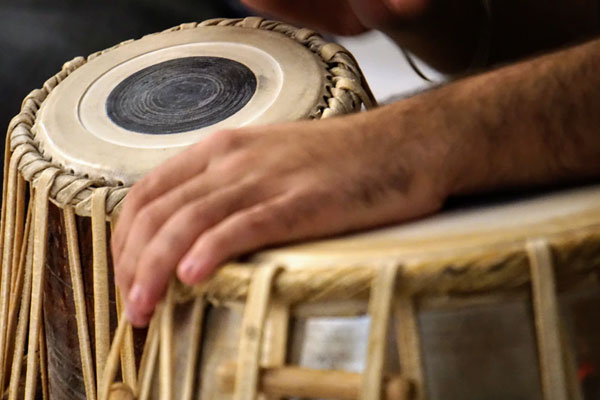One prominent manifestation of cultural identity is the musical experience that originated in a particular region. Indian classical music heavily contributes to the country's culture and heritage. You can distinguish when you hear it, but do you ever wonder what makes it so unique? How is it different from Bollywood or even western pop? Or how is it similar? You can learn these concepts in detail through a dedicated music theory book. But if you just want a primer, this article will introduce you to the basics of Indian Classical Music.
History
Indian classical music had its roots in South Asia, dating back 6,000 years since its start. Sacred Vedic literature of Hinduism used chants laid with music notes and rhythmic cycles. Its origins can also be traced back to the ancient Natyashastra, the Sanskrit scripture on performance arts by Bharata Muni.
Indian classical music is generally known as an oral tradition, where a ‘guru’ will train a student for many years. In this training, they will develop a spiritual bond reflecting the musical experience and philosophical beliefs attached to the latter. In recent times, many institutions teach and research this subject. However, learning through experience with an adept teacher is still considered the most productive method.
Classical Music vs. Folk and Bollywood
The main difference between classical music and other types depends on the context. Folk music is played and performed during celebrations to unite communities. While most of it derives from classical, traditional music, Bollywood music’s target is to entertain and arouse excitement. Indian classical music requires an elaborate and disciplined way of learning.
Another significant aspect that is uncommon even in western music is the disinclination to orchestration. During an Indian classical music performance, a maximum of two performers will be on stage with two to three accompanists.
Naad
As mentioned, Indian classical music leans towards spirituality more than entertainment. Naad, which pertains to the vibrations made or the sound, has two major categories. Aahat pertains to struck sound or vibrations we can hear. It is similar to the western concept of acoustics. The other one is Anahat, which relates to metaphysical or divine sound that cannot be perceived by the ears and can only be achieved through deep meditation.
Swaras
The musical notes that constitute Indian classical music share the same principle as western music. These notes are called Swaras. Consequently, the Swaras also follow a different naming convention: Sa, Re, Ga, Ma, Pa, Dha, and Ni. These respectively correspond to C to B notes of western music. A set of Swaras is called Sargam, which can be likened to movable solfege. The first note, ‘Sa’ does not require starting at the C key. For Indian classical music performers, a significant level of understanding and mastery of Swaras is needed. Combinations of Swaras within a set of constraints are made on the spot during the performance.
Saptak
There is also an Indian musical equivalent to octaves – Saptak. The term comes from the word ‘sapt’, meaning seven - the number of Swaras within the measure. So why is it seven and not eight like in octaves? The higher ‘Sa’ is considered the beginning of the next Saptak. Indian classical music generally uses three main Saptak. First is the Madhya Saptak, the middle or original octave. Second, the Mandra Saptak pertains to the lower octave, half the frequency of Madhya Saptak. Lastly, the Taar Saptak is the higher octave which is double the frequency of Madhya.
In the context of vocal music, the Madhya Saptak is not an absolute measure. It depends on the pitch which you are most comfortable singing in. In western concepts, it is similar to the middle register, which is a full-throated sound. The lower octave or Mandra Saptak can be compared to the chest register and Taar Saptak to head register.
Raag and Taal
Indian classical music is heavily attuned to nature, having its two foundational elements based on natural events. Raag is a melodic framework with motifs that constitute musical mood. Taal, on the other hand, defines the time cycle or musical meter through a rhythmic beat. Clapping or tapping a hand on an arm is an example. In Indian classical music, the space between the notes is usually more important than the melody itself.
Hindustani and Carnatic Music
The two characteristic traditions that comprise classical music are called Hindustani and Carnatic music. These are defined by geographical divide, with the former attributed to North India and the latter to its South. Both of them originated from the text Samaveda, one of the four primary Vedas of the Aryans.
The divide took place during the Islamic invasion of the country. Then, North India was under the grip of Muslim invaders, and its music consequently was influenced by Persian and Arabic musical techniques. As a result, it gave rise to Hindustani music, derived from how the Muslims called the region Hindustan. Meanwhile, the Islamic influence was not as strong in the southern part. Hence, music developed along the more traditional lines - now known as Carnatic music.
Due to their different evolution patterns, these two have developed significant differences from one another. It can be seen through the language used, grammatical aspect, and their choice of instrumentation. But the most distinguishing difference lies in their intonation or the way notes are presented. The melodic interpretation of Carnatic musicians follows the Raag Nattai, while Hindustani musicians subscribe to Raag Jog.
There is much to study about this intricate discipline. But the basic concepts discussed will give you a head start in understanding the rich tradition of Indian classical music. If you are a budding composer, you can even apply what you’ve learned here in your next compositions. Check out this article to learn more things from classical music you can use in your project. 